In government, we could say that innovation is invention that solves a problem or meets a need — in the community or within an organization undertaking the work. Big changes make government agencies more effective, prepared and useful, and they touch all aspects of agency operations — from IT to employee morale to digital services and more. In recent years, federal agencies such as the Census Bureau, General Services Administration, Department of Homeland Security, Department of Housing and Urban Development, and Office of Personnel Management have launched innovations labs, innovation libraries, and other innovation-focused resources and programs. Cities and states have as well, such as through Philadelphia’s Technology and Innovation group within the city’s Office of Innovation and Technology (OIT). Being innovative is not easy, of course: It requires a little bravery and lots of planning. But local and federal agencies are creating the space and resources to launch innovations that will, in the future, become standard operations. In this guide, we share case studies and best practices regarding some of government’s most pressing issues — workforce, customer experience and data use, to name a few — and we hear from government experts who know a thing or two about helping innovative initiatives succeed.
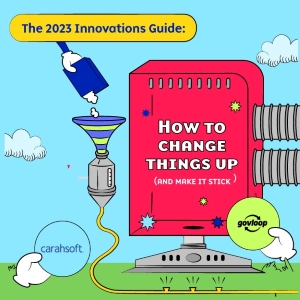 Analytics Innovations Draw a Complete Data Picture
Analytics Innovations Draw a Complete Data Picture
“Spreadsheets are structured things: They have clearly defined lines, cleanly labelled columns, and rules that govern what goes where. Government analytic programs have become skilled at working within those parameters, even if it means spending hours manually manipulating data to fit. Spreadsheets are 30-year-old desktop technology. But other data exists, doesn’t it? The world is full of PDF documents, audio and video files, social media posts and other ‘messy’ data sources — the unstructured data that most agencies overlook. And most agency analytics programs are fragmented and overly manual. Recent innovations seek to change this.”
Read more insights from Alteryx’s Solutions Marketing Director for the Public Sector, Andy MacIsaac.
Driving Innovation to the Edge
“Across government, innovation is happening at the edge. By leveraging cloud, artificial intelligence (AI), machine learning (ML) and related technologies, agencies can deliver services more quickly and effectively at the far reaches of operations, whether that’s in the battlefield or on the International Space Station (ISS). At the Red Hat Government Symposium held in late 2022, government and industry leaders discussed how agencies were leveraging these technologies to accelerate mission delivery. Their discussions and examples help illuminate how agencies are adapting to make the most of modern technological opportunities.”
Read more insights from Red Hat’s Government Symposium.
Build an Innovative Ecosystem Through Cloud Architecture
“In data transformation and innovation, it helps to view things through a different lens. Within the data ecosystem are three core pillars for transformation: people, processes and technology. Simple, singular data platforms should work with an architecture that breaks down information silos rather than creates them. That facility comes through in qualities such as data mesh or a decentralized data architecture that’s organized by business domain and operates through self-service. The architectural design also must help strengthen system security. That’s enormously important for federal data.”
Read more insights from Snowflake’s Chief Technology Officer for the Global Public Sector, Winston Chang.
Overcoming Challenges With Observability
“As agencies take steps to innovate — such as expanding reliance on the cloud and adding new apps, integrations, and automations — their IT ecosystems become more complex. There are more places where things can go wrong and more pressure to fix them quickly. The task of monitoring these complex systems gets more complicated, too. ‘The question is, how do I know there’s an issue?’ said Brian Mikkelsen of Datadog. ‘Is it when the tickets start flowing, when complaints increase, when your leadership team asks why something isn’t working?’ None of those options are ideal. Datadog’s application performance management platform provides a real-time window into the digital environment, identifying performance and security issues quickly. Its ‘full stack’ hybrid infrastructure capability means everything from the back end to the front end is monitored and reported via infrastructure metrics, application performance traces, and correlated logs.”
Read more insights from Datadog’s Vice President and General Manager, Brian Mikkelsen.
Download the full GovLoop Guide for more insights from these digital transformation leaders and additional government interviews, historical perspectives and industry research.

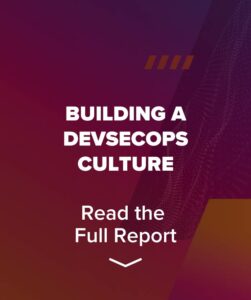
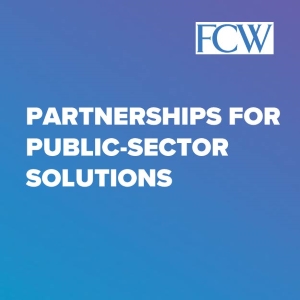 “Success for integrators and their partners is delivering secure solutions that provide meaningful and impactful mission outcomes. Leidos invests heavily in testing and building relevant solutions for public-sector customers to ensure that innovative technologies are cost-effective, resilient, compliant with government requirements and best positioned to solve mission problems. Investing in a continuous innovation cycle is critical. Leidos and Red Hat recognize that we are in the business of continuous modernization. When Red Hat and other key partners offer innovative new solutions, our partnerships enable us to move fast in testing and proving that the technology works and can scale to meet the government’s needs. Leidos leverages innovative technology to drive great mission outcomes in our Aviation Security Product business unit (Security Enterprise Solutions). By using cloud-native AI/ML modeling solutions, Leidos had been able to achieve significant performance gains in our process for developing algorithms for security detection products, ultimately improving travelers’ experiences at airports.”
“Success for integrators and their partners is delivering secure solutions that provide meaningful and impactful mission outcomes. Leidos invests heavily in testing and building relevant solutions for public-sector customers to ensure that innovative technologies are cost-effective, resilient, compliant with government requirements and best positioned to solve mission problems. Investing in a continuous innovation cycle is critical. Leidos and Red Hat recognize that we are in the business of continuous modernization. When Red Hat and other key partners offer innovative new solutions, our partnerships enable us to move fast in testing and proving that the technology works and can scale to meet the government’s needs. Leidos leverages innovative technology to drive great mission outcomes in our Aviation Security Product business unit (Security Enterprise Solutions). By using cloud-native AI/ML modeling solutions, Leidos had been able to achieve significant performance gains in our process for developing algorithms for security detection products, ultimately improving travelers’ experiences at airports.”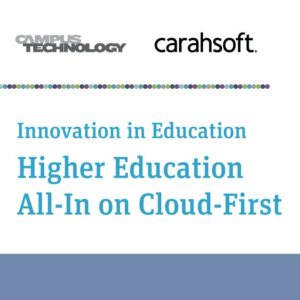 Cloud Budgets Keep Growing
Cloud Budgets Keep Growing 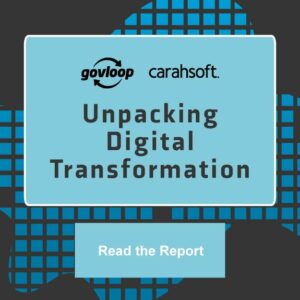 How Agencies Are Driving Innovation to the Edge
How Agencies Are Driving Innovation to the Edge 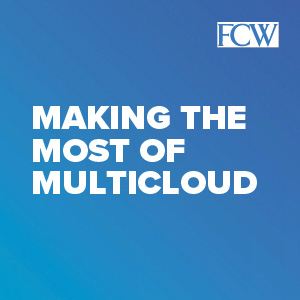 “For government agencies, security is a key consideration when adopting cloud technologies. The latest solutions can actually help agencies improve their security posture because of the specialized and deep focus that cloud providers bring to their mission of providing scalable and secure compute, network and storage infrastructure. At Google, we take a defense-in-depth approach to security and have over 1,000 professionals whose sole job is to ensure the security of our customers’ data and systems. They have made it their mission to prevent bad actors — whether people, companies or nation-states — from accessing customers’ data.”
“For government agencies, security is a key consideration when adopting cloud technologies. The latest solutions can actually help agencies improve their security posture because of the specialized and deep focus that cloud providers bring to their mission of providing scalable and secure compute, network and storage infrastructure. At Google, we take a defense-in-depth approach to security and have over 1,000 professionals whose sole job is to ensure the security of our customers’ data and systems. They have made it their mission to prevent bad actors — whether people, companies or nation-states — from accessing customers’ data.”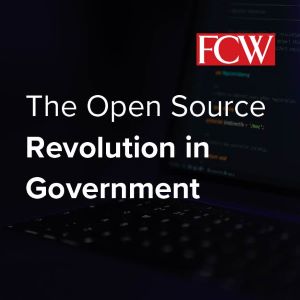 “Open source transforms the way agencies manage hybrid and multi-cloud environments. The most critical technology in the cloud, across all providers, is Linux. Everything is built on top of that foundation — both the infrastructure of the cloud and cloud offerings. Given the right partner, the promise of Linux is that it provides a consistent technology layer for agencies across all footprints, including multiple cloud providers, on-premises data centers and edge environments. From that foundation, agencies and their partners can build portable architectures that leverage other open source technologies. Portability gives organizations the ability to use the same architectures, underlying technologies, monitoring and security solutions, and human skills to manage mission-critical capabilities across all footprints.”
“Open source transforms the way agencies manage hybrid and multi-cloud environments. The most critical technology in the cloud, across all providers, is Linux. Everything is built on top of that foundation — both the infrastructure of the cloud and cloud offerings. Given the right partner, the promise of Linux is that it provides a consistent technology layer for agencies across all footprints, including multiple cloud providers, on-premises data centers and edge environments. From that foundation, agencies and their partners can build portable architectures that leverage other open source technologies. Portability gives organizations the ability to use the same architectures, underlying technologies, monitoring and security solutions, and human skills to manage mission-critical capabilities across all footprints.”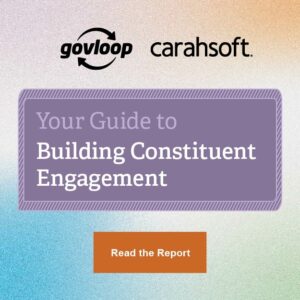
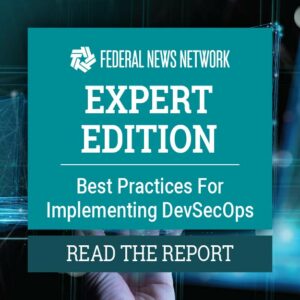
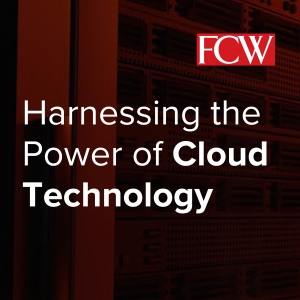 “Most agencies operate hybrid environments that combine on-premises systems with cloud platforms and services. However, there are challenges associated with that approach. Hybrid environments require the ability to manage a diverse set of technologies, tools and operating models and to integrate workloads, applications and services across clouds and on-premises systems. A hybrid cloud environment also changes the traditional security boundary and introduces new vulnerabilities related to the nature of off-premises managed services and the unique attributes of cloud, which include ephemeral services and API-driven, software-defined everything. Fortunately, advanced cloud-based cybersecurity solutions are helping agencies move to zero trust architectures by shifting security services from primary data centers to edge locations to enable rapid analysis and a stronger security posture.”
“Most agencies operate hybrid environments that combine on-premises systems with cloud platforms and services. However, there are challenges associated with that approach. Hybrid environments require the ability to manage a diverse set of technologies, tools and operating models and to integrate workloads, applications and services across clouds and on-premises systems. A hybrid cloud environment also changes the traditional security boundary and introduces new vulnerabilities related to the nature of off-premises managed services and the unique attributes of cloud, which include ephemeral services and API-driven, software-defined everything. Fortunately, advanced cloud-based cybersecurity solutions are helping agencies move to zero trust architectures by shifting security services from primary data centers to edge locations to enable rapid analysis and a stronger security posture.”